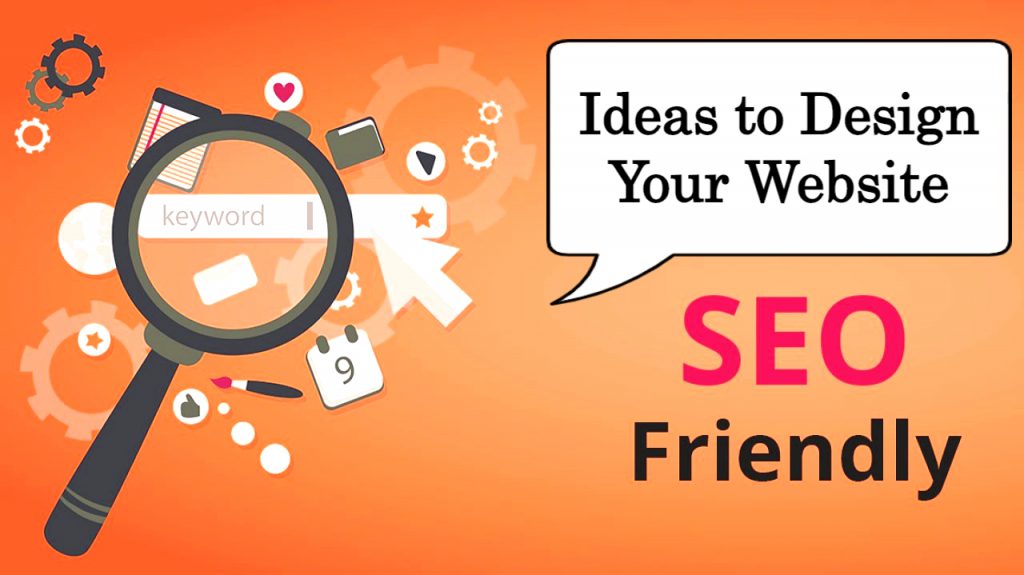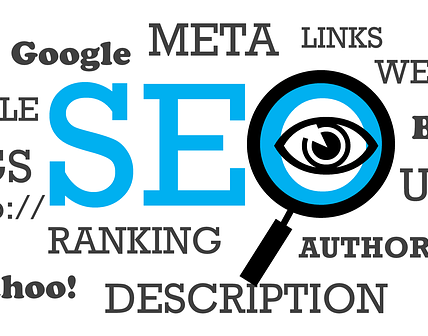
Making a professional, well-designed website does not make sure your site receives a large quantity of traffic. If you would like to increase the traffic that your website receives, then you’ll have to make use of search engine optimization. SEO refers to techniques that are utilized to enhance your website’s visibility, and therefore ranking with search engines.
Search engine optimization is a significant part of your online presence. If you use SEO correctly, you can enhance your search engine ranking and drive more traffic to your website. If you’d like visitors to find your website, then you must use SEO on your site. When people consider search engine optimization, they look at the copy that’s on their site. Many small business owners make sure that they use keywords in the articles, weblog copy, or posts on their website. However, they frequently fail to build their web design SEO friendly. You can incorporate search engine marketing techniques into more than merely your web.
1. Your Site Navigation Should Search Engine Friendly
Utilizing Flash for navigation onto your website might be bad news for those who are not mindful of the way exactly to make Flash items available and web-crawler-friendly. Search engines have an extremely challenging time adapting a website that utilizes Flash.
CSS and unobtrusive JavaScript Provides Any Those attractive affects you are searching for without sacrificing your search engine rankings.
2. Integrate Social Media into your Website’s Design
Search engines appreciate social media, as do your clients. Adding social media elements into the design of your website will help it to rank better with search engines. When designing your website, make sure you add your networking icons also, for all of your social media accounts, such as Twitter, Pinterest, and Facebook. It will not rank your site more highly among search engines, but it will also reveal your possible consumers that your company is personable.
3. Don’t Overload the Page with Visuals
Most of us know by now that content is king. Content encouraged by appealing, active visual elements is better. There may be too much of a fantastic thing, however. If you rely primarily on graphics, the search engines may scan your site as the light on content – that is an unfortunate thing. If you include a lot of videos and infographics, encourage them together with summaries, transcripts, or related items on precisely the same page. That way, the search engines will probably know what’s there if they scan your site. By always using alt tags on 11 and optimize your vision. Google can find keywords in Flash, therefore lots of convinced you call out those too well.
4. Put Java Scripts Outside of the HTML Document
When you are doing code for your website, make certain you externalize JavaScript and CSS.
Search engines observe a website through what’s in the HTML document. CSS and JavaScript, if not externalized, may add additional lines of code into your HTML documents that, generally, are likely to be ahead of the actual content soon and might make crawling them more slowly. Search engines want to get to the information on a website as fast as possible.
5. Make Your URLs Search Friendly
Non-Search friendly URLs are URLs that are hard to crawl, such as query strings. The excellent URLs comprise keywords that help in describing the content of the webpage.
Let’s take an example, think about the following URLs for a Property Repair website:
- properyrepairnc.com/services/home-repair/
- properyrepairnc.com/services/home-decor/
- properyrepairnc.com/services/commercial-repair/
The above URLs are excellent for SEO. In comparison, these aren’t:
- properyrepairnc.com/services/repairs-final-version/
- properyrepairnc.com/repairs&home%property
- properyrepairnc.com/repairs4CommercialCompanies
6. Heading tags Help SEO
Splitting content up together with headers (such as we did previously), can be just really a wise idea for at least one reason. If you have them — not merely does this create your articles to read, but also, it may boost your search engine optimization. Search engines consider them number (h1 conveys the maximum weight), and even the more keywords you’re able to enter in them, the higher. Notice how we’ve got the keyword “SEO” to most of our headings? It was not an accident.
7. Make Sure Your Design is Accessible
If your website isn’t entirely accessible, then it will affect your conversion rates and also your ranking with search engines. Your website must be viewable on all browsers. Even as though it isn’t, it will induce visitors to depart your site without purchasing any product or using your service. If your website loads slowly, also it’s hard to navigate, then it will rank low with search engines. Be sure your website looks correct on all browsers, it loads correctly, and that you don’t use any images that load slowly.
8. Mobile-friendly Means SEO-Friendly
Search engines rank mobile-friendly, better web sites. Most users search Google on mobile phones; therefore that it makes sense; they would prefer websites offering a superior experience. You’re able to cause an edition of your website to load smartphones and tablets. However, designs that adjust to some device is best for search engine optimization. There is just one variant of code to search engines to crawl. Plus, search engines despise case you’ve got a mobile-friendly version and a desktop one, of course, duplicate articles, you have precisely the pages on either.
9. An Excellent User Experience (UX) means Great SEO
The bounce rate is one of the factors for rankings. When users have a terrible experience when they see your website, they won’t stay around. Providing users an engaging, easy-to-use website with clear instructions can go a long way toward keeping visitors participated with your website. Not only are you going to be rewarded with more website traffic and conversions, however, but you also find much far better organic traffic as well.
Here are some website components that translate to good UX:
- Simplicity – Keep the design clean and simple. Do not be terrified of whitespace. Utilize conversion goal supporting elements in your design.
- Make Content Scannable – Articles into sections with descriptive headers also make it easier to read if the user landed on a web page. Users like to scan more than read; that’s why always keep your content in sections with proper headings.
- Minimal Barriers – Don’t ask a lot of your website traffic. Asking them to sign up for the newsletter the land on a full page of your website to the first time is UX–those visitors do not understand who you are. If your site contains forms and processes, ask only.
- Intuitive Navigation – Make it easy for individuals to navigate the website. Make navigation menus prominent and use clear, illustrative tags. Consistently give users a spot to browse.
If you don’t have SEO experts for guidance, you can contact Cibirix, a well-known Digital Marketing Agency in North Carolina. They can help you in proper audit and explain to you complete SEO parameters before designing the website.











![Watch Video Now on xiaohongshu.com [以色列Elevatione perfectio X美容仪 perfectio X 全新仪器黑科技了解下]](https://www.techburgeon.com/wp-content/uploads/2019/07/perfectiox-singapore-150x150.jpg)
